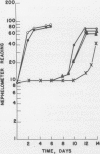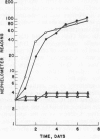Abstract
The genus Leptospira can be divided into three groups based on purine analogue sensitivity and lipase (trioleinase) activity. Group 1 contains members of the “parasitic complex” of leptospires which initially cannot grow in media containing 10 μg of 2,6-diaminopurine (DAP) per ml or 200 μg of 8-azaguanine per ml. In addition, leptospires in this group possess lipase activity. Group 2 also contains members of the “parasitic complex” of leptospires. Although these leptospires are similarly sensitive to 8-azaguanine, they differ from group 1 leptospires in that they grow in media containing 10 μg of DAP per ml, and they do not possess detectable lipase activity. Group 3 consists of leptospires belonging to the “biflexa complex.” These leptospires are resistant to both purine analogues and have lipase activity.
Full text
PDF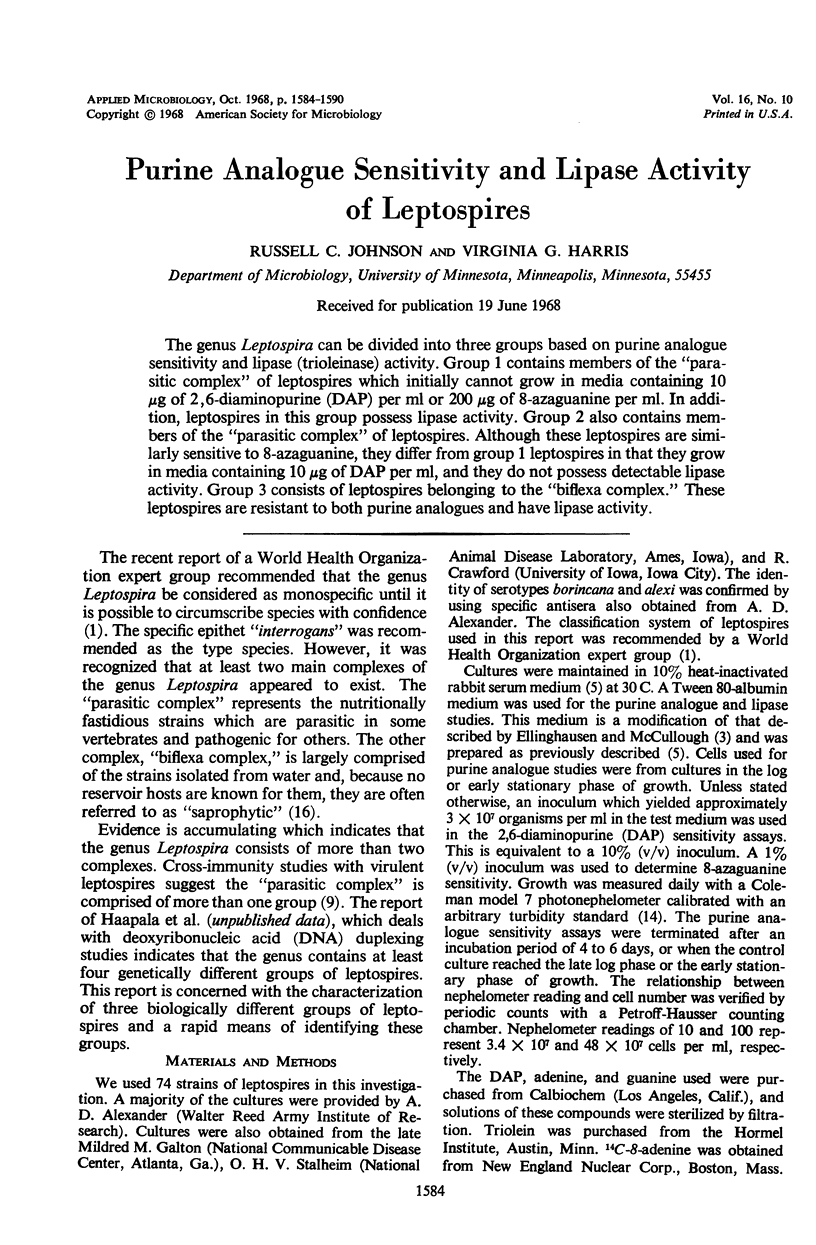
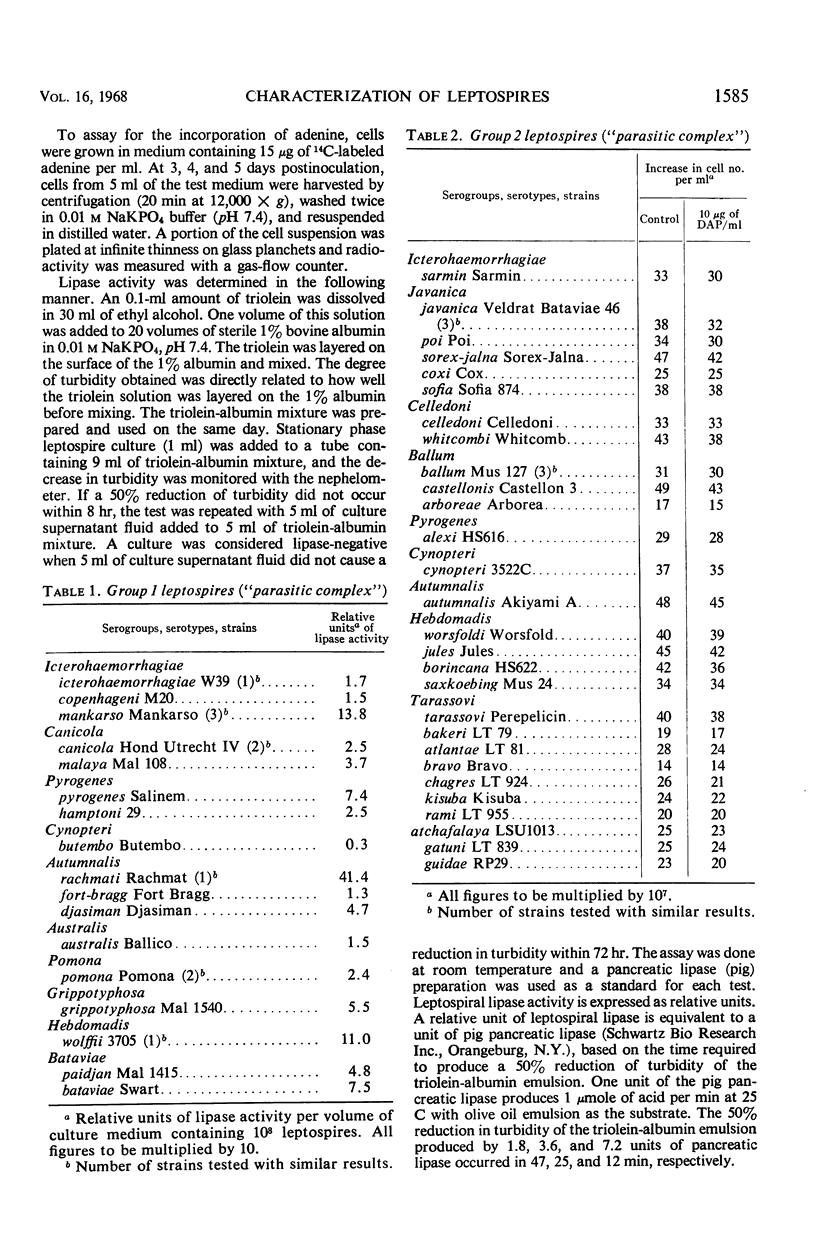
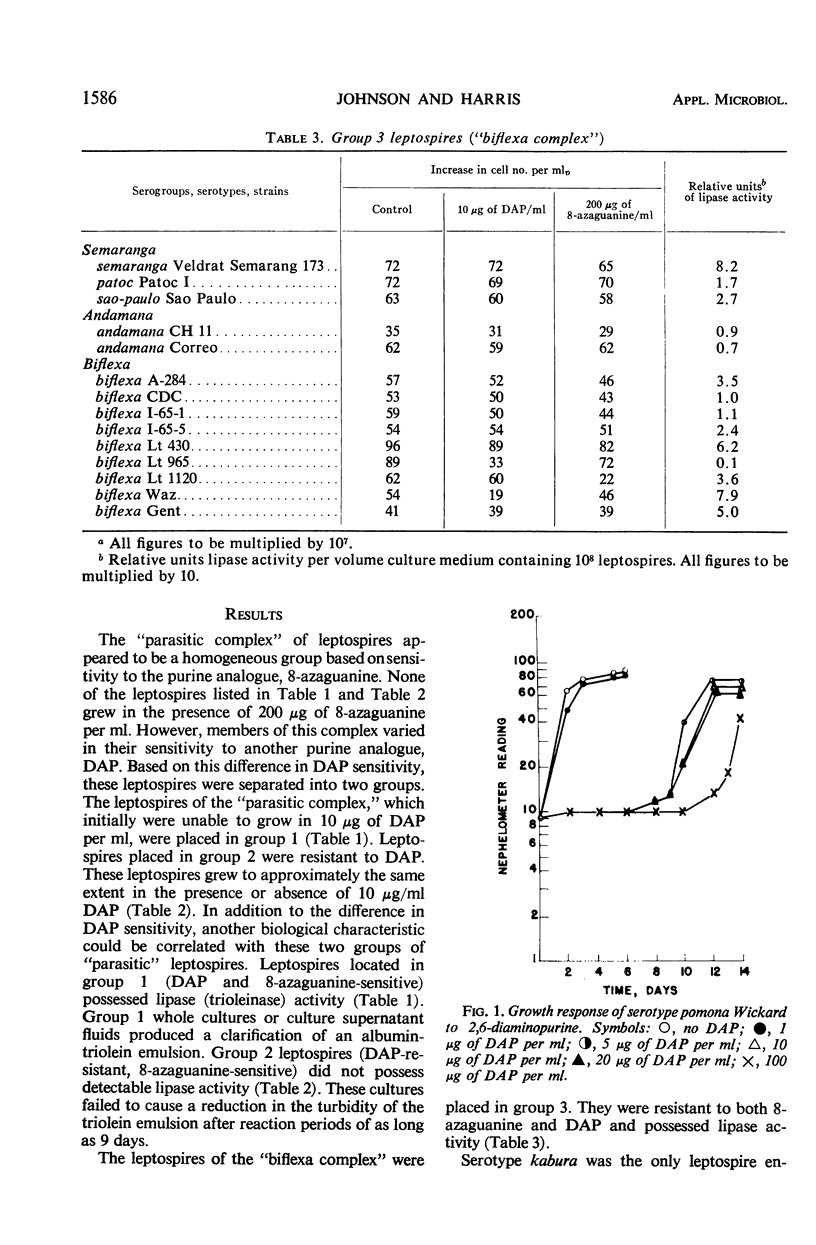
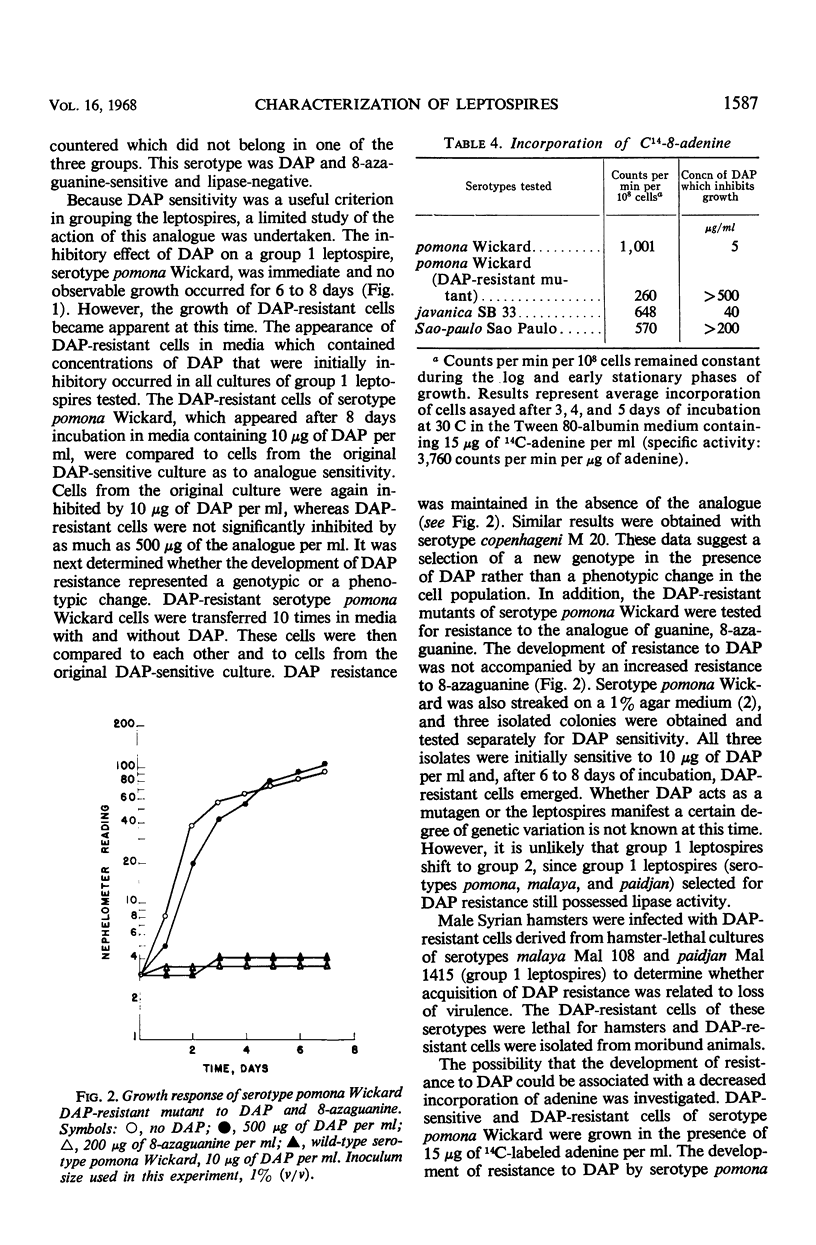
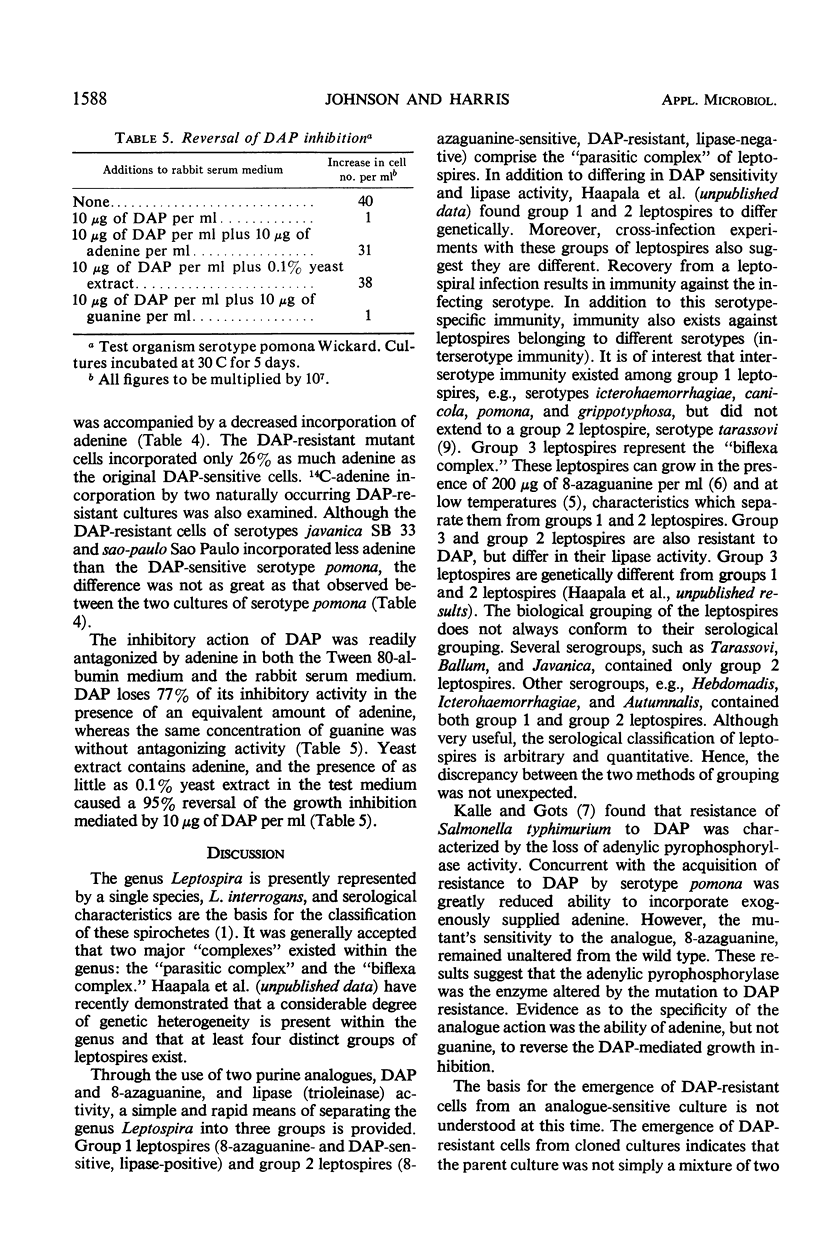
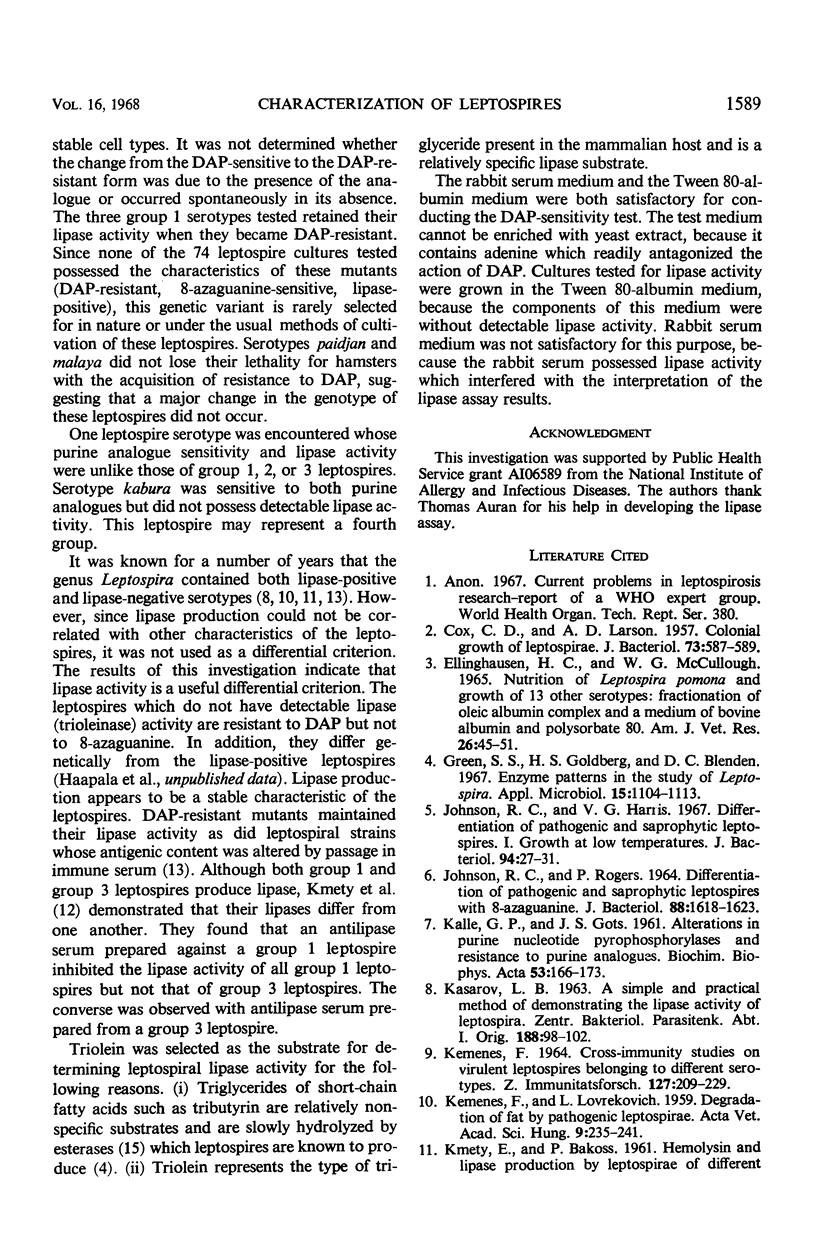
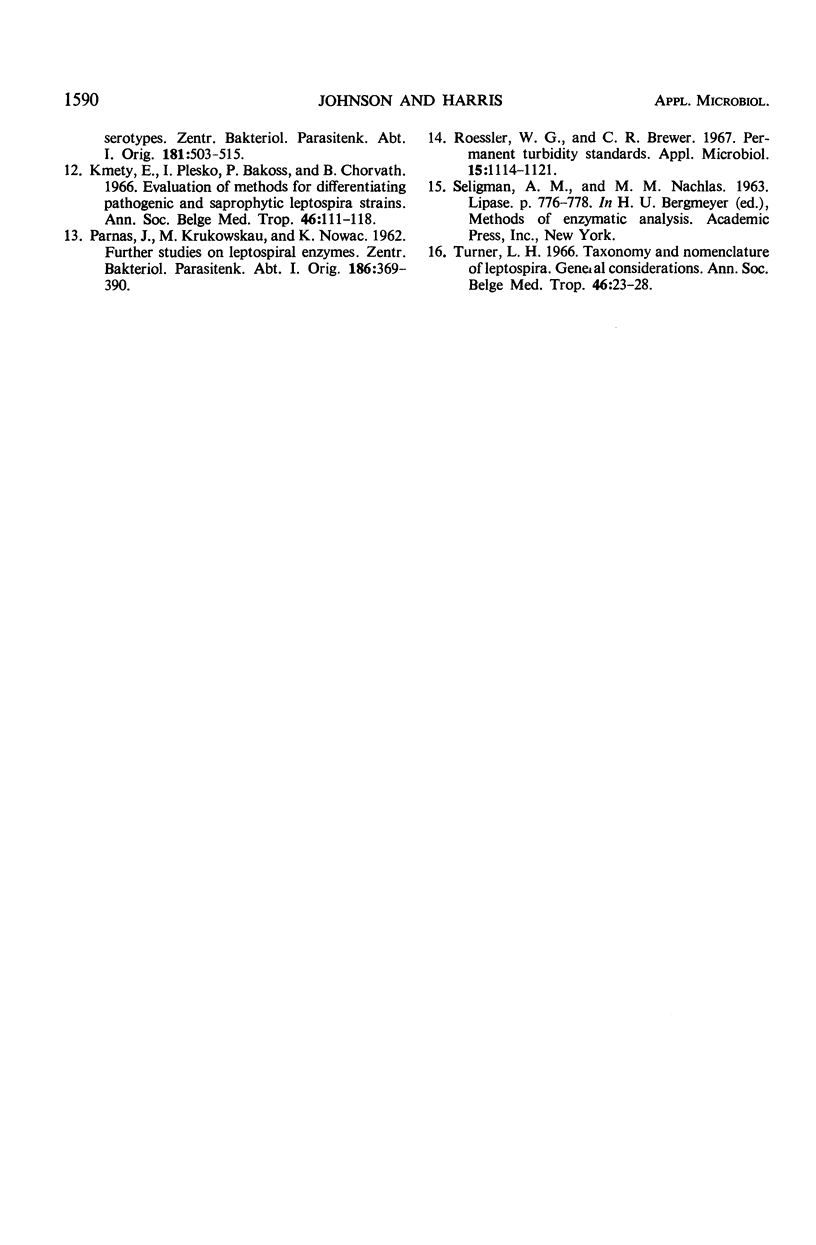
Images in this article
Selected References
These references are in PubMed. This may not be the complete list of references from this article.
- COX C. D., LARSON A. D. Colonial growth of leptospirae. J Bacteriol. 1957 Apr;73(4):587–589. doi: 10.1128/jb.73.4.587-589.1957. [DOI] [PMC free article] [PubMed] [Google Scholar]
- ELLINGHAUSEN H. C., Jr, MCCULLOUGH W. G. NUTRITION OF LEPTOSPIRA POMONA AND GROWTH OF 13 OTHER SEROTYPES: FRACTIONATION OF OLEIC ALBUMIN COMPLEX AND A MEDIUM OF BOVINE ALBUMIN AND POLYSORBATE 80. Am J Vet Res. 1965 Jan;26:45–51. [PubMed] [Google Scholar]
- Green S. S., Goldberg H. S., Blenden D. C. Enzyme patterns in the study of leptospira. Appl Microbiol. 1967 Sep;15(5):1104–1113. doi: 10.1128/am.15.5.1104-1113.1967. [DOI] [PMC free article] [PubMed] [Google Scholar]
- JOHNSON R. C., ROGERS P. DIFFERENTIATION OF PATHOGENIC AND SAPROPHYTIC LEPTOSPIRES WITH 8-AZAGUANINE. J Bacteriol. 1964 Dec;88:1618–1623. doi: 10.1128/jb.88.6.1618-1623.1964. [DOI] [PMC free article] [PubMed] [Google Scholar]
- Johnson R. C., Harris V. G. Differentiation of pathogenic and saprophytic letospires. I. Growth at low temperatures. J Bacteriol. 1967 Jul;94(1):27–31. doi: 10.1128/jb.94.1.27-31.1967. [DOI] [PMC free article] [PubMed] [Google Scholar]
- KALLE G. P., GOTS J. S. Alterations in purine nucleotide pyrophosphorylases and resistance to purine analogues. Biochim Biophys Acta. 1961 Oct 14;53:166–173. doi: 10.1016/0006-3002(61)90803-4. [DOI] [PubMed] [Google Scholar]
- KASAROV L. B. [A simple and practical method of detection of lipase activity in Leptospira]. Zentralbl Bakteriol. 1963 Jan;188:98–102. [PubMed] [Google Scholar]
- KEMENES F. (CROSS-IMMUNITY STUDIES ON VIRULENT STRAINS OF LEPTOSPIRES BELONGING TO DIFFERENT SEROTYPES.) Z Immunitats Allergieforsch. 1964 Aug;127:209–229. [PubMed] [Google Scholar]
- KMETY E., BAKOSS P. [Hemolysin and lipase production in Leptospira of different serotypes]. Zentralbl Bakteriol. 1961 Apr;181:503–515. [PubMed] [Google Scholar]
- Kmety E., Plesko I., Bakoss P., Chorvath B. Evaluation of methods for differentiating pathogenic and saprophytic leptospira strains. Ann Soc Belges Med Trop Parasitol Mycol. 1966;46(1):111–122. [PubMed] [Google Scholar]
- Roessler W. G., Brewer C. R. Permanent turbidity standards. Appl Microbiol. 1967 Sep;15(5):1114–1121. doi: 10.1128/am.15.5.1114-1121.1967. [DOI] [PMC free article] [PubMed] [Google Scholar]
- Turner L. H. Taxonomy and nomenclature of leptospira. General considerations. Ann Soc Belges Med Trop Parasitol Mycol. 1966;46(1):23–27. [PubMed] [Google Scholar]



